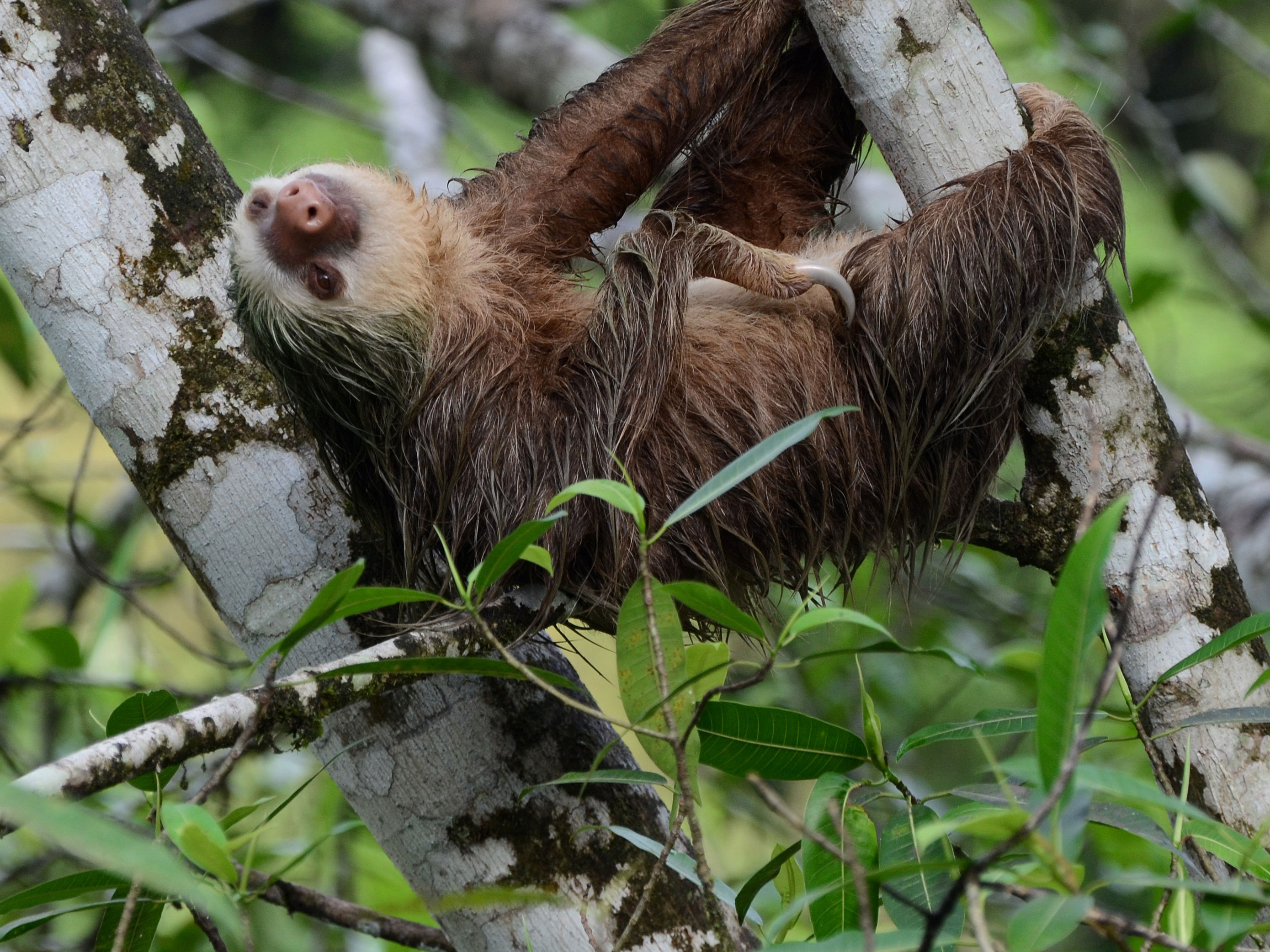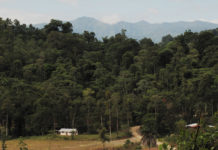A Tico – that is, a native Costa Rican – may mean one of several things when he utters the words pura vida. He may be extending a greeting, expressing gratitude, articulating approval or conveying amazement. Or he may simply be making a positive exclamation somewhere along the lines of “Splendid” or “Awesome!” Translated literally, pura vida means “pure life”. It is an oft-repeated and uniquely Costa Rican maxim that encapsulates an entire philosophy and a broad range of life-affirming experiences.
We say
Pura vida is an appropriate response to the news that Thomson (0871 231 4691; thomson.co.uk) has just begun a new flight connection from Gatwick to the city of Liberia, in northern Costa Rica. The weekly flights run on Tuesdays; a test booking for the departure on 16 November, coming back on 23 November, reveals a return fare of only £479.
Scheduled flights from Heathrow via Atlanta on Delta to the capital, San José on the same dates cost £540. The capital is scruffy and dangerous in parts, but worth exploring for a day or two – especailly the Gold Museum.
They say
“This journey to Costa Rica has illuminated the minds of 180 million people … What a great opportunity and privilege we have to be associated together in a common cause. Viva Costa Rica! Arriba Costa Rica!” – President John F Kennedy at the University of Costa Rica in San José, 20 March 1963.
“Undeniably a nature-lovers’ paradise” – The Footprint Costa Rica Handbook by Peter Hutchison (£14.99).
Green and happy?
Costa Rica’s progressive environmental policy has resulted in one of the finest national parks systems on the planet. There are currently 68 protected areas in Costa Rica – from wildlife reserves to world patrimony sites. Together they encompass over a quarter of the country’s territory.
According to the “Happy Planet Index 2009” compiled by the New Economics Foundation, Costa Rica is the world’s happiest nation as well as the world’s greenest country. A coincidence? Perhaps not. To sample Costa Rica’s natural goodness, Journey Latin America (020-8747 8315;www.journeylatinamerica.co.uk) offers a 14-day highlights tour from £1,767 per person, with scheduled flights extra.
Biological intensity
National Geographic has described Costa Rica’s Corcovado National Park as “the most biologically intense place on earth”. It certainly has a point. Embracing 13 vegetation zones from rainforest to mangroves, the park is home to a stunning cornucopia of exotic wildlife delights including jaguars, tapirs, peccaries, anteaters, crocodiles, harpy eagles, the Central American squirrel monkey and the country’s largest population of scarlet macaws.
The nature-travel specialist Reef and Rainforest (01803 866 965;www.reefandrainforest.co.uk) has been providing tours to Costa Rica for 20 years and includes Corcovado park in its spectacular 14-day “Wildlife Adventure” tour. It costs £3,174 per person (excluding flights) and also promises options including hiking, zip-lining, abseiling, horse-riding and white-water rafting.
Caribbean dreams
The Caribbean coast of Costa Rica receives considerably more rain than the rest of the country, giving it a distinctive geography of teeming tropical rainforests and mangrove swamps. The Amazon-like expanse of Tortuguero park – a vital nesting ground for sea turtles – encloses a labyrinth of darkly shrouded jungle waterways where you can spot caimans, manatees, boa constrictors and hundreds of species of birds, including the endangered green macaw.
Tucan Travel (020-8896 1600, www.tucantravel.com) offers tours to the region. Costs for seven days are £560 per person including accommodation, beach trips and snorkelling in the dazzling coral reefs of Cahuita National Park.
Walking the clouds
For otherworldly beauty, head to the primeval cloud forests of Monteverde ( www.monteverdeinfo.com), which lies four hours drive from Liberia. Set in cool highlands at 1,440m, the forest’s rolling mists supply life-giving moisture to a staggering diversity of vegetation. Above the arboreal canopy, a series of elevated suspension bridges supply sublime views over the park’s rugged gorges, waterfalls and the treetops themselves, where you might spot any of Monteverde’s 400 bird species, including the endangered but eternally resplendent quetzal. Down below, layers of branches clamber skyward, all swathed in rich green mosses, cascading vines, brightly coloured bromeliads and scores of delicate orchids.
Fiery beauty
Tempestuous volcanoes add an explosive element to Costa Rica’s beguiling natural landscape. Volcá* Arenal (www.arenal.net), to the east of the city Liberia, is one of the world’s most active and has been making eruptive overtures since the 1960s. Today, an almost continuous emission of lava cascades down the slopes, accompanied by noxious plumes of smoke and the occasional earth-shattering boom. The lava is best observed after dark, when the streams of glowing red magma contrast well against the night sky (and somehow appear all the more menacing). While Arenal’s cone is only visible in the dry season (December to April), year-round attractions on the volcano’s lower slopes include hiking trails and piping-hot springs.
Sustainable travel?
Costa Rica has no shortage of so-called “eco-lodges”. They run the gamut from luxury retreats with full spa facilities to simple research stations with outhouses.
What actually qualifies as an “eco-lodge” – or an ecologically sound enterprise – is hotly debated. At best, the prefix “eco-” embodies an ethical philosophy of conservation and community. At worst, it’s self-serving and meaningless.
Whether or not you’re looking to travel in style, it’s worth checking your hotel’s environmental credentials before checking in. Bona fide eco-lodges not only strive to protect the natural environment by using systems of renewable energy, water conservation and recycling, they also employ local people, pay fair wages and contribute to local communities. El Remanso ( www.elremanso.com), in the rainforests of the Osa Peninsula, is one of Costa Rica’s finest, with cabins from US$155 (£103) per night.
What Google will tell you
“Costa Rica’s territory is so small that it encompasses only 0.03 per cent of the planet’s surface but is still within the top 20 richest countries in biodiversity … It is possible to find more species in 1,000sq km in Costa Rica than in the same area in countries like Brazil or Colombia … In fact, with only 51,100sq km of total territory, Costa Rica has nearly half a million species, representing 4 per cent of the planet’s expected biodiversity.”
Costa Rican Tourist Board ( www.visitcostarica.com).
What Google won’t tell you –until now
The tranquil fishing village of Punta Banco is perched on the Burica Peninsula, southern Costa Rica, several kilometres north of the fabled surf area of Pavones. Hidden at the end of the road, few travellers ever get this far.
Flanked by sublime beaches and chattering rainforests, Punta Banco supplies ample opportunities for surfing, birding, walking or simply lazing in a hammock. It is also home to one of Costa Rica’s oldest and most renowned eco-lodges, The Tiskita Jungle Lodge ( www.tiskita-lodge.co.cr), located within the grounds of a sumptuous 800-acre private reserve.
A stay here costs $475 (£320) per person for three days, including all meals and guides.
Source: The Independent
Image: Geoff Gallice/Wikimedia Commons










